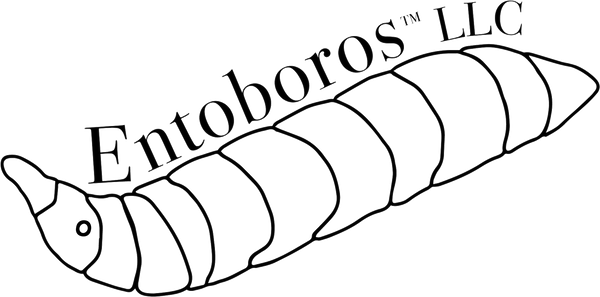Story and Mission
Thank you so much for taking some time to learn about Entoboros™!
Before we talk about ourselves, how do you pronounce this funky word?
Entoboros - En-Toe-Boar-Oh-Ss
Where does the name come from?

"Ento"-mology: Study of insects.
Our-"boros": Serpent that eats its own tail. Symbol of cyclic renewal.
How it started

Entoboros™ was founded by Gabriel Rubin in 2022. Gabe was working as an engineer at Apple when he left to pursue his dream of a business that addresses some of the biggest global environmental challenges of today.
Let's get to the important stuff
Why it started
Globally, 33% of all food produced annually for human consumption is lost or wasted. This is approximately 2.5 billion tons per year [1]. From production to the landfills where it decays, the wasted food contributes 8-10% of annual global greenhouse gas emissions [2]. Furthermore, over the last 40 years, nearly 33% of farmable land globally has been lost to either erosion or pollution [3]. With the global population expected to grow 13% from 7.6 billion to 8.6 billion by 2030, humanity needs to do more with less [4]. Population growth, climate instability, water scarcity, and reduction in arable land all threaten global food security. These conditions will push the global food system past its current limits, both in terms of food waste and food production. Current sources of feed protein, such as fishmeal and soy, come at the cost of important ecosystems. Dredging the ocean floor or clear-cutting forests for protein is not ethical, sustainable, or economical. This can already be observed in the increasing prices of fishmeal and soy.
What to do
A solution... or a step in the right direction... an affordable protein source that uses less water, space, and energy. Thus, Entoboros™ was founded.
The Entoboros™ Mission
Holistically address the global problems of organic waste, sustainable protein, and soil health.
How we're doing it
We're diverting as much of that 33% of wasted food as we can away from landfills and into our process. Or as we like to call it, "waste valorization". The "waste" (not once we've got our hands on it) is converted into insect protein and soil amendment (like really nutrient rich compost). Hermetia illucens, also known as the Black Soldier Fly (BSF), is a non-pest fly from the Stratiomyidae family.

They are common around the world, non-invasive, not pests, not vectors for disease, and have an exceptionally varied diet. Their natural role is that of a decomposer, turning organic wastes into protein and nutritious soil amendment. It also happens to be the case that BSF larvae are one of the best feeders for animals that eat insects! They're also a great replacement for fishmeal and soymeal!
That's informative but what does selling feeder insects have to do with the global environment?
We're so glad you asked! We're just getting started! We've got big dreams and bigger plans to accomplish them. This is just part of the start! As we grow, we'll use more organic waste, scaling to meet agricultural needs for protein and soil amendment!
Is the waste you're feeding safe?

Absolutely! We currently use local sources of organic "waste" like brewery spent grain or grocery waste. We make sure it's safe, nutritious, and AAFCO approved, then we let our BSFL get to work. Want to learn more about our Feedstock Transparency?
